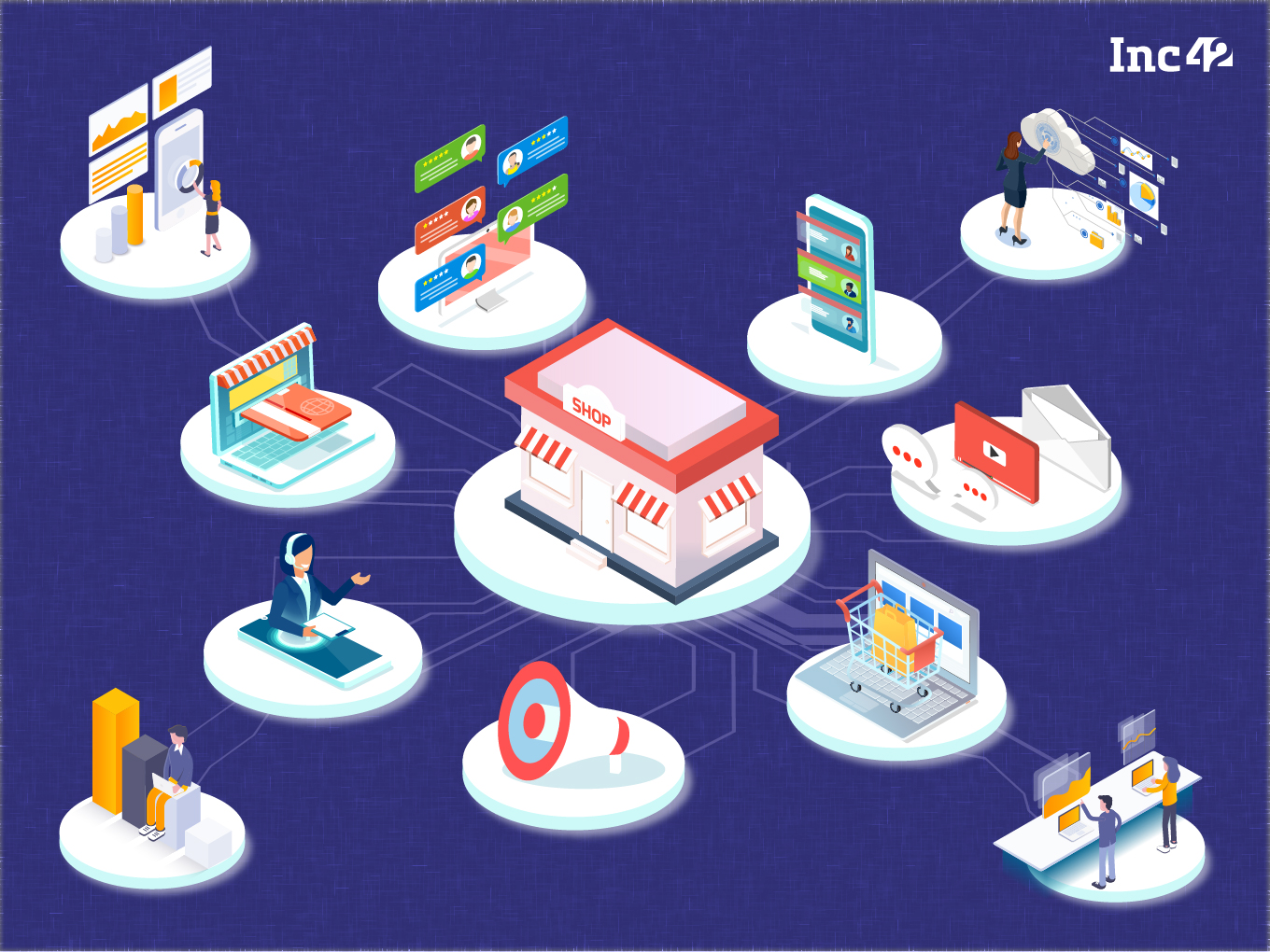SUMMARY
As India strides towards a $400 Bn ecommerce opportunity brands need to cater to consumers’ preference for personalised experience
Although an omnichannel model throws open more avenues for sales, engaging & retaining customers based on their objectives and preferences is pretty tough
To ensure greater outreach and customer alignment, as brands move to Tier 2, 3 & beyond cities, brands need to focus on data analytics & market positioning based on engaging narratives
As India strides towards a $400 Bn ecommerce opportunity by 2030, traditional retail has started to feel the impact of big-bang changes, transforming old processes and obsoleting the past ways of doing business. What began in the wake of the pandemic to cater to consumers’ preference for personalised experience is here to stay even after the turmoil.
The Covid crisis may be over soon, but brands won’t be able to live on their legacy businesses where products would just sell without much effort. In this shifting retail landscape, all companies, big and small, need to stay more in touch with shoppers in a seamless, cohesive manner if they hope to grab more sales despite the headwinds.
This, however, can be a tough job for startups and legacy businesses unless they seek expert help. Customers today are more picky and cautious, more tech-savvy and value-conscious. Many of them are also financially constrained, given the post-pandemic economic downturn.
As communications with customers need to be seamless across all touch points, many companies are transitioning from a disjointed multichannel model to an omnichannel environment, breaking down the silos and creating a single, integrated brand experience.
“Customers are now omnichannel; so, brands need to be, too. I doubt you will find anyone whose 100% purchase requirements are met online. You will still find people who prefer to do it 100% offline. Therefore, if scale is an objective, omnichannel becomes important,” said Shankar Prasad, founder and CEO of Thane-based skincare company Plum, a 100% vegan brand operating online.
Deepak Gupta, COO of Gurugram-based Bombay Shaving Company (BSC), concurred. “Consumers now expect a seamless brand experience and demand fulfilment. Besides pivoting to a fully omnichannel brand, we are bolstering our warehouse and supply chain across the country.”
Both brands told Inc42 that nearly 60% of their overall sales come from online channels and the rest from offline stores.
Although an omnichannel model throws open more avenues for sales (and customer interactions), it also brings in challenges galore. Engaging with customers and retaining them based on their objectives and preferences are pretty tough. But with myriad options for customers to choose from, it becomes even more difficult when you introduce different channels.
Resolving Engagement Woes For Indian Ecommerce
Prasad of Plum was able to put his finger on why classic digital communication might not work well in the current scenario. “There is some sort of fatigue regarding mail, messages, push notifications and other such reminders. We have to make sure that our communication remains fresh and interesting and still reaches our large database of customers,” he said.
This overexposure (the pandemic triggered it as all interactions in the physical world had to be cut off for a long time), coupled with the intense competition in the ecommerce space, makes engagement all the more critical and challenging for brands.
“We believe at least 20-30% of the customers acquired through our website are ‘lost’ to other ecommerce marketplaces even though customers largely remain loyal to the brand,” said Prasad. Therefore, more than 40% of the buyers are repeat customers of the brand.
Since the pandemic, India has been home to 130 Mn internet buyers, with 80 Mn added in the last three years. This number is likely to increase as internet users from Tier 2 and Tier 3 markets are moving from online interaction to online shopping, according to Ankur Pahwa, former partner of EY.
Adding to that, according to EY’s ex-partner, Ankur Pahwa, ‘Internet users in the Tier 2 and Tier 3 markets are moving from interacting online to transacting ecommerce consumers’
Although brands will have the opportunity to tap into the vast Indian hinterland, they are still grappling with visibility and customer loyalty when it comes to Bharat users. Add to this the critical shift in consumer behaviour and expectations post the pandemic, and it becomes clear why periodic deals and discounts will no longer serve as a growth trigger for ecommerce players. It also means brands need to focus on data analytics and market positioning based on engaging narratives to ensure greater outreach and customer alignment.
Interestingly, the direct-to-consumer (D2C) model has flourished most during Covid times, allowing brands to get up, close and personal with their customers. It has also revealed that brands need to figure out ‘what’ people want, ‘why’ they want it and ‘where’ they want it (the channels they prefer for engagement and shopping) without depending on costly and time-consuming hit-or-miss marketing. Finding these answers is critical to enhancing customer engagement and experience, which will eventually lift sales.
Regarding Plum’s strategy to engage and retain customers, Prasad said, “Online sales are primarily driven by what’s new and what’s the best offer and less by routine fulfilment and replenishment. While the latter is important for a smooth operation, it cannot be the primary growth driver. Thus, data use is most important both qualitatively and quantitatively.”
At a time when many consumers opt for brands based on their overall utility and the value they generate, companies have gone beyond creating product awareness and started working on their mission statements. For instance, Bombay Shaving Company is generating awareness about good grooming practices while SuperBottoms, a Mumbai-based cotton diaper brand, is talking about pregnancy that resonates with new moms.
According to Gupta, BSC is encouraging people to interact with the brand so that it can engage with them better and retain them. Towards that goal, it is building several expertise-driven initiatives like webinars held by dermatologists and key influencers demonstrating the value of these products. The startup claims a customer retention rate of more than 55%.
Stressing the need for building a community, SuperBottoms’ founder and CEO Pallavi Utagi said, “We carry out multiple programmes in this community, including sessions around sustainable living, good/bad touch for kids, prenatal classes and more. This community has experienced parents helping new ones besides doctors, nutritionists and grandparents.”
As a brand’s growth essentially depends on its customers, the company should also incorporate the feedback received from users to improve its products. “This has helped us retain our customer base and expand it further,” added Utagi.
In spite of their DIY/self-help approach, brands still require effective CRM solutions to optimise and streamline their strategies.
Gupta acknowledged this trend, detailing how CRM could further strengthen a brand’s performance. “We build and nurture relationships through CRM, communicating the features, value and benefits of our offerings. Our customer delight team is frequently in touch with users to get their valuable feedback, address grievances and recommend suitable solutions.”
How Brands Can Stay In Control In The New Normal
The D2C rush that started in mid-2020 has grown exponentially, covering Tier 2 markets and beyond. The ecommerce sub-sector is also expected to cross $300 Bn by 2030, and the need for an omnichannel model will increase multifold.
Commenting on the role of customer engagement and retention in driving the market, Plum’s Prasad said that the current trend would not change anytime soon, and the only way to counter this complexity would be to embrace it.
“The proper use of data, a flexible approach to marketing and putting our customers first every time can help us stay ahead of the growing complexity. On the other hand, nothing works better in the long term than a consistently delightful customer experience. We have to work hard to ensure that is maintained across all touch points,” he added.
The market today requires brands to focus on their communications and narratives. In the metros, people are more concerned about product quality, brand’s mission, its green metrics and more. But things get more complicated when companies move to Tier 2 and Tier 3 markets.
For ecommerce players heading out that far, it is essential to build a connection with users by tapping into vernaculars, making their processes easy and keeping their products affordable.



























